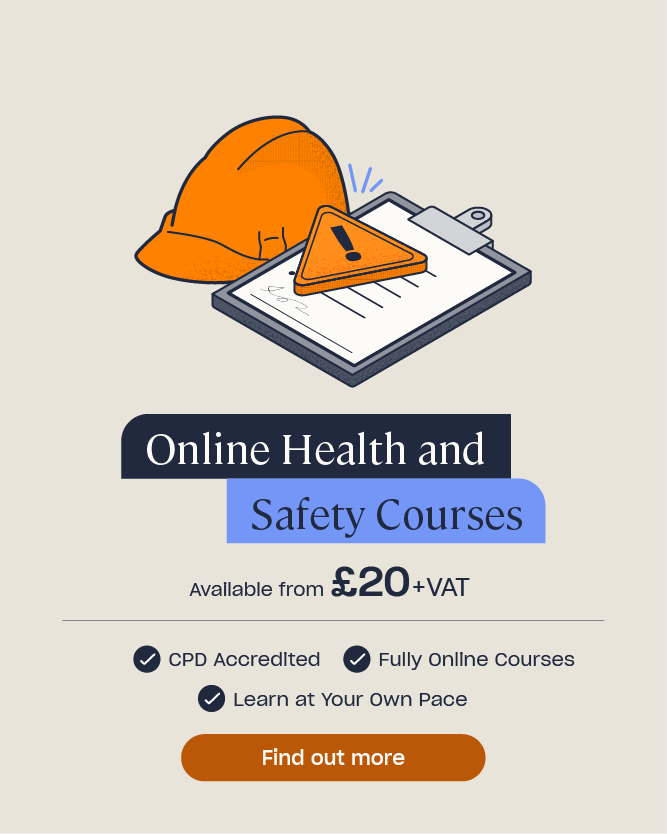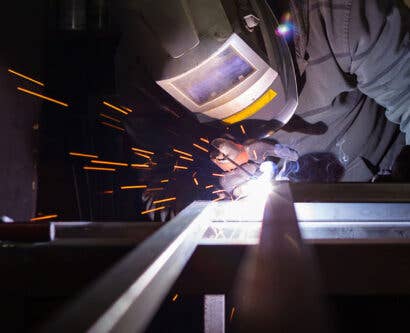How to Become a Plasterer
To become a plasterer, you need to have a great attention to detail, a strong work ethic and the ability to work to a high standard and finish. Good plasterers are always in demand in the UK, whether it’s in domestic or commercial properties or on a construction site, so choosing plastering as a career is a steadfast route to a lifelong trade. In this article, we’ll look at what a plasterer does at work, what skills and qualifications you need to become a plasterer and how to start plastering as a career.

Asbestos Awareness Training
Working as a plasterer means there is the possibility of disturbing ACMs (Asbestos-Containing Materials) in the course of your work. Our Asbestos Awareness Course gives you the tools to go about your work safely and shows what to do if asbestos is encountered.
What Do Plasterers Do?
A plasterer is someone who applies plaster, smoothly and evenly, to the walls and ceilings of buildings. This enables the building to then be decorated. Plastering may involve creating smooth, flawless finishes but it can also involve repair work, restoration work or applying decorative textures.
Plasterers work in a variety of settings – you might be in a person’s home, in a commercial setting, in a historical building or on a construction site.

Key jobs a plasterer may be required to do include:
- Preparing a surface for plastering, including cleaning, sanding and applying bonding agents to remove uneven surfaces and encourage adhesion.
- Removing old, existing plaster.
- Estimating the amount of materials needed for a task.
- Mixing plaster to the right consistency and to the requirements of the task, whether by hand or with an electric mixer.
- Applying wet plaster to walls and ceilings using a variety of techniques and tools to achieve a smooth, textured or decorative finish.
- Applying external wall coverings, such as rendering or pebbledash.
- Fitting plasterboard to internal walls.
- Repairing damaged plaster, filling cracks and holes and fixing water damaged plaster.
- Cleaning up properly and disposing of waste materials safely, whether in a skip or at a waste disposal site, after completing a job.
- Following all relevant health and safety procedures at all times.
What Qualifications Do You Need to Be a Plasterer?
The route you take into becoming a plasterer often depends on the requirements of the employer you’d like to work for so, if you’ve got a specific company in mind, take a look at their job adverts to see what they expect from the plasterers they hire.
In general, to become a plasterer you’ll need either a certificate from a relevant college course, a diploma, an apprenticeship and/or some hands-on work experience. Most new plasterers will have qualifications such as an apprenticeship and a Level 2 or Level 3 Diploma in Plastering.
You’ll also need a valid CSCS card if you plan to work on a construction site.
Plasterer College Courses
A college course will teach you the basics of plastering and give you a certificate proving your skills. Examples of relevant courses include a Level 2 NVQ in Plastering (Construction), a Level 6 SVQ in Construction Building (Plastering) if you’re in Scotland or a T Level in On Site Construction. You’ll usually need at least 4 or 5 GCSEs at grades 9 to 4 (A* to C), or equivalent to do a college course.
Plastering Diplomas
Taking a diploma in plastering helps you to demonstrate that you have practical plastering skills. Examples are the Level 2 Diploma in Plastering or Level 3 NVQ Diploma in Plastering.
Plastering Apprenticeships
An apprenticeship enables you to learn on the job whilst also spending time in college and may lead to a position within the company you train with. A Plasterer Level 2 Intermediate Apprenticeship takes 2 years to complete and you’ll need GCSEs in at least English and maths to apply.
Plastering Work Experience
Voluntary work experience will put you ahead of other applicants when applying for a role as a plasterer, as it gives you valuable hands-on skills and knowledge of the industry.
Work as Plasterer’s Labourer
You can work as a plasterer’s labourer or plasterer’s mate without formal qualifications and it can be a good way to get some hands-on plastering experience or training before you apply for a full-time role.
Plastering CSCS Card
If you plan to work or train on a construction site, such as plastering for a new-build developer, then you’ll also need a valid Construction Skills Certification Scheme (CSCS) card. Bear in mind the time and costs associated with obtaining a card if you’re aiming to pursue this line of work.

Plastering Health and Safety Awareness Training
Alongside the practical skills needed to become a plasterer, there is also a lot of theoretical knowledge that you need to know. A lot of this relates to health and safety legislation and procedures, which you must understand in order to carry out your work safely and effectively.
High Speed Training has a wide range of health and safety awareness training that’s ideal for plasterers and can be completed online, giving you a certificate to put on your CV at the end. Some of the awareness level courses on offer include:
- Asbestos Awareness (Category A)
- Health and Safety Training for Employees
- Working at Height
- Manual Handling Awareness
- Control of Substances Hazardous to Health (COSHH)
- Workplace First Aid
You can access our full catalogue of online health and safety training courses here.
Plasterer Skills
As well as being able to carry out the practical tasks done by a plasterer, such as preparing surfaces, mixing plaster and applying it to the wall (your ‘hard skills’), plasterers also need a range of interpersonal skills to be successful. These plastering skills are known as ‘soft skills’ and are an important part of the role.

Examples of plasterer soft skills are:
- Knowledge of the building and construction industry as a whole.
- Good levels of dexterity and fitness.
- Great attention to detail.
- Ability to work at height safely.
- Initiative and proactivity.
- Time management and organisation.
- Ability to work well under pressure and time constraints.
- Ability to work well with others.
- Communication skills.
- Basic business management skills.
- Basic computer skills.
How to Start Plastering as a Career
An excellent plasterer will always be in demand and, if you’re hard working, diligent and enthusiastic, you’ll find yourself with a career for life, as customers will flood in through word of mouth recommendations.
If you’re new to plastering, then take a look at the UK government’s apprenticeships near you or courses near you websites to find some initial training. You can then use the find a job service to look for plastering roles.
Other ways to find a job as a plastering include trade shows, industry events, online job platforms and social media. Places like MyBuilder and Facebook are good ways to find local, one-off jobs, particularly in domestic properties, and are great if you plan to work as a freelance contractor.
To start your own plastering business, you’ll need to consider everything from a brand name and logo to a website, marketing plan, financial plan and inventory. Take a look at our article on Starting a Business and our online course that covers the essentials of Starting a Business.
If you opt to work as a plasterer for a larger company, then you can easily progress your plastering career once you’ve worked in the role for a while. Career progression could include moving into a supervisory role, becoming a construction site engineer, site management or specialising in an area such as drylining, ceiling fixing or heritage conservation.
Need help writing your CV as a plasterer? Then take a look at our guidance on How to Write Your First CV.
Plastering is a career that’s always in demand in the UK, as diligent, high-quality and organised plasterers can be hard to come by. If you decide to become a plasterer, then use your skillset to your advantage, work hard on your attention to detail, creativity and practical knowledge obtained through your plastering training, and success as a plasterer will soon follow.
Further Resources:
- Online Health and Safety Courses
- How to Find the Right Career for Me
- What is Asbestos Awareness Training & Who Needs it?
- How to Become an Engineer











